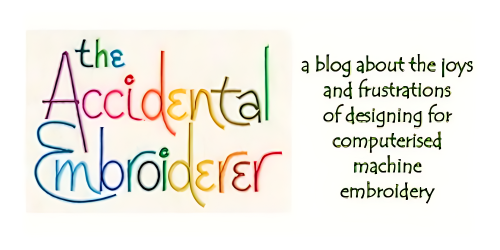In the past week, several different ideas have come together to contribute to some new designs. In the first place, Frances Crawford (who runs our painting class) has drawn our attention to Pictish art. There are many carved Pictish stones in this part of Scotland and although their designs aren’t as well known as the more elaborate classical Celtic work, I love the simple, natural style of the Pictish animals and birds.
Second, we’ve also been discussing ways to use transferred images in painting, and I thought that transfers could also be used as backgrounds to embroideries
Third, I’ve been following through the idea of using metallic foil in embroidery, and the Pictish designs seemed natural subjects for gilding
My first attempt at using metallic foil was encouraging (see last week’s blog entry) but I think I was lucky in choosing a small design with a lot of overstitching. More recently I’ve found that there are technical problems in applying foil to large areas of fabric. However with a little experimentation I’ve got to grips with the technique and have now been able to use quite large areas of foil in embroideries
So here are two Pictish animals – a deer and a goose - embellished with metallic foil. The background to the deer is transferred from a computer print-out, but the goose is just stitched onto plain fabric

A deer, taken from a Pictish stone carving, stitched onto a transferred background and embellished with silver leaf

A Pictish goose, with gold leaf on the head and copper leaf on the back and wings. The metallic leaf is applied first, and the embroidered detail on the wings is stitched on top of the metallic foil
